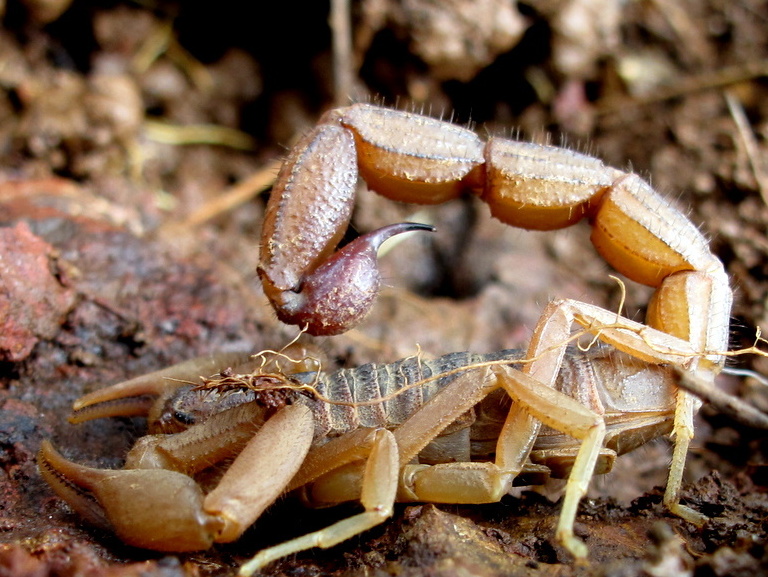Category : Reptiles Share
Scientific Name : Hottentotta tamulus Fabricius
Created By: Abhishek Bhor, Department of Botany, Annasaheb Awate Arts, Commerce and Hutatma Babu Genu Science College, Manchar
Created On: 18-09-2022
Specimen Information
Common Name(s):विंचू, Indian Red Scorpion
Synonym(s): Hottentotta tamulusconcanensis Hottentotta tamulus sindicus
Family: Buthidae
Status: LC
Description
Description: The Indian red scorpion is a fairly small scorpion, ranging from 2 to 3 inches in length. It ranges in color from bright reddish orange to dull brown. The species has distinctive dark gray ridges and granulation. It has relatively small pincers, a thickened tail and a large stinger. As with spiders, male scorpion pedipalps appear somewhat inflated compared to those of females. Like other scorpions, the Indian red scorpion is fluorescent under black light. Habitat and Distribution: The species is found in India, eastern Pakistan, and eastern Nepal. Recently, it has been seen rarely in Sri Lanka. Although little is known about the Indian red scorpions ecology, it appears to prefer humid tropical and subtropical habitats. It often lives near or in human settlements. Diet and Behavior: The Indian red scorpion is a carnivore. It is a nocturnal ambush predator that detects prey by vibration and subdues it using its chelae and stinger. It feeds on cockroaches and other invertebrates and sometimes small vertebrates, such as lizards and rodents. Reproduction and Offspring: In general, scorpions reach sexual maturity between 1 and 3 years of age. While some species can reproduce asexually via parthenogenesis, the Indian red scorpion only reproduces sexually. Mating occurs following a complex courtship ritual in which the male grasps the female pedipalps and dances with her until he finds a suitable flat area to deposit his spermatophore. He guides the female over the spermatophore and she accepts it into her genital opening. While scorpion females tend not to eat their mates, sexual cannibalism is not unknown, so males quickly depart following mating. Females give birth to live young, which are called scorplings. The young resemble their parents except they are white and unable to sting. They stay with their mother, riding on her back, at least until after their first molt. In captivity, Indian red scorpions live 3 to 5 years.


